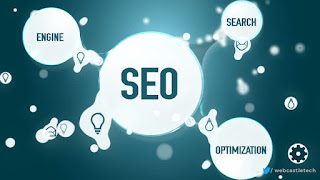The Evolution of Web Design: From HTML to AI
The landscape of web design has undergone a remarkable transformation since the early days of the World Wide Web. From simple static pages built with HTML to dynamic, AI-driven interfaces, the evolution of web design reflects the continuous innovation and adaptation within the digital realm. In this comprehensive exploration, we trace the evolution of web design from its foundational roots in HTML to the cutting-edge advancements driven by artificial intelligence (AI). Along the journey, we'll examine key milestones, trends, and technologies that have shaped the ever-evolving landscape of web design.
The Birth of HTML and Static Websites
In the early 1990s, the World Wide Web was in its infancy, and the concept of a graphical user interface for internet navigation was just beginning to take shape. Tim Berners-Lee's creation of Hypertext Markup Language (HTML) laid the groundwork for the development of static web pages. HTML provided a standardized markup language for structuring content and linking documents, enabling the creation of basic websites consisting of text, images, and hyperlinks.
During this era, web design was primarily focused on functionality rather than aesthetics. Designs were minimalist, with limited color palettes and rudimentary layouts. Websites served primarily as informational hubs, lacking the interactive and dynamic features that are commonplace today.
The Rise of CSS and the Era of Stylish Web Design
As the internet grew in popularity, so too did the demand for more visually appealing and user-friendly websites. The introduction of Cascading Style Sheets (CSS) in the late 1990s revolutionized web design by separating content from presentation. CSS provided designers with greater control over typography, layout, and visual styling, paving the way for more sophisticated and stylish web designs.
During this period, web designers began experimenting with vibrant color schemes, innovative layouts, and multimedia elements to create immersive and engaging online experiences. The introduction of CSS frameworks and libraries further accelerated the evolution of web design, making it easier for designers to create responsive and scalable layouts across different devices and screen sizes.
The Emergence of Dynamic Web Content and JavaScript
As the internet continued to evolve, there was a growing demand for websites that offered dynamic and interactive content. JavaScript emerged as a powerful client-side scripting language that enabled developers to add interactivity, animations, and real-time updates to web pages.
With the advent of JavaScript frameworks and libraries such as jQuery, AngularJS, and React, web designers gained access to a wealth of tools and resources for creating highly interactive and responsive web applications. These technologies facilitated the development of rich user experiences, including interactive forms, dynamic content loading, and seamless transitions between pages.
The Era of Responsive Design and Mobile Optimization
The proliferation of mobile devices and smartphones in the early 21st century prompted a fundamental shift in web design philosophy. With users increasingly accessing the internet on mobile devices, designers were tasked with creating websites that could adapt seamlessly to various screen sizes and resolutions.
Responsive web design emerged as a solution to this challenge, advocating for flexible layouts, fluid grids, and media queries to ensure optimal viewing experiences across desktops, tablets, and smartphones. Designers embraced a mobile-first approach, prioritizing performance, usability, and accessibility in their design decisions.
The Advent of Artificial Intelligence in Web Design
In recent years, artificial intelligence (AI) has emerged as a transformative force in the field of web design. AI-powered tools and algorithms are revolutionizing the way designers create, optimize, and personalize online experiences for users.
One notable application of AI in web design is the use of machine learning algorithms to analyze user behavior and preferences, enabling designers to deliver personalized content and recommendations in real-time. AI-driven design platforms leverage natural language processing (NLP) and computer vision to automate repetitive tasks, generate design assets, and optimize user interfaces based on data-driven insights.
The Future of Web Design: Balancing Human Creativity and Technological Innovation
As we look ahead to the future of web design, one thing is clear: the intersection of human creativity and technological innovation will continue to drive progress and transformation in the digital landscape. While AI and automation offer unprecedented opportunities for efficiency and scalability, the human element of design – creativity, empathy, and intuition – remains essential in crafting meaningful and memorable online experiences.
Partnering with a Web Designing Company in Kochi
In the vibrant tech hub of Kochi, India, businesses seeking to establish a compelling online presence can benefit from the expertise of a reputable web designing company. With its thriving ecosystem of talent and innovation, Kochi is home to a diverse community of web designers, developers, and digital strategists who specialize in creating bespoke solutions tailored to the unique needs and objectives of each client.
A leading web designing agency in India, Kochi-based companies offer a comprehensive range of services, including responsive web design, UI/UX optimization, e-commerce development, and digital marketing. By partnering with a web designing company in Kochi, businesses can leverage the latest technologies and best practices to elevate their online presence and drive tangible results.
In conclusion, the evolution of web design from HTML to AI reflects the dynamic nature of the digital landscape and the relentless pursuit of innovation and excellence. As technology continues to evolve and user expectations evolve, web designers must embrace change, adapt to emerging trends, and harness the power of technology to create compelling and impactful online experiences.
Through a combination of creativity, expertise, and collaboration, web designers have the opportunity to shape the future of the internet and empower users to connect, interact, and explore in ways that were once unimaginable. As we embark on this journey of discovery and innovation, let us embrace the possibilities of tomorrow and continue to push the boundaries of what is possible in web design and development.


Comments
Post a Comment